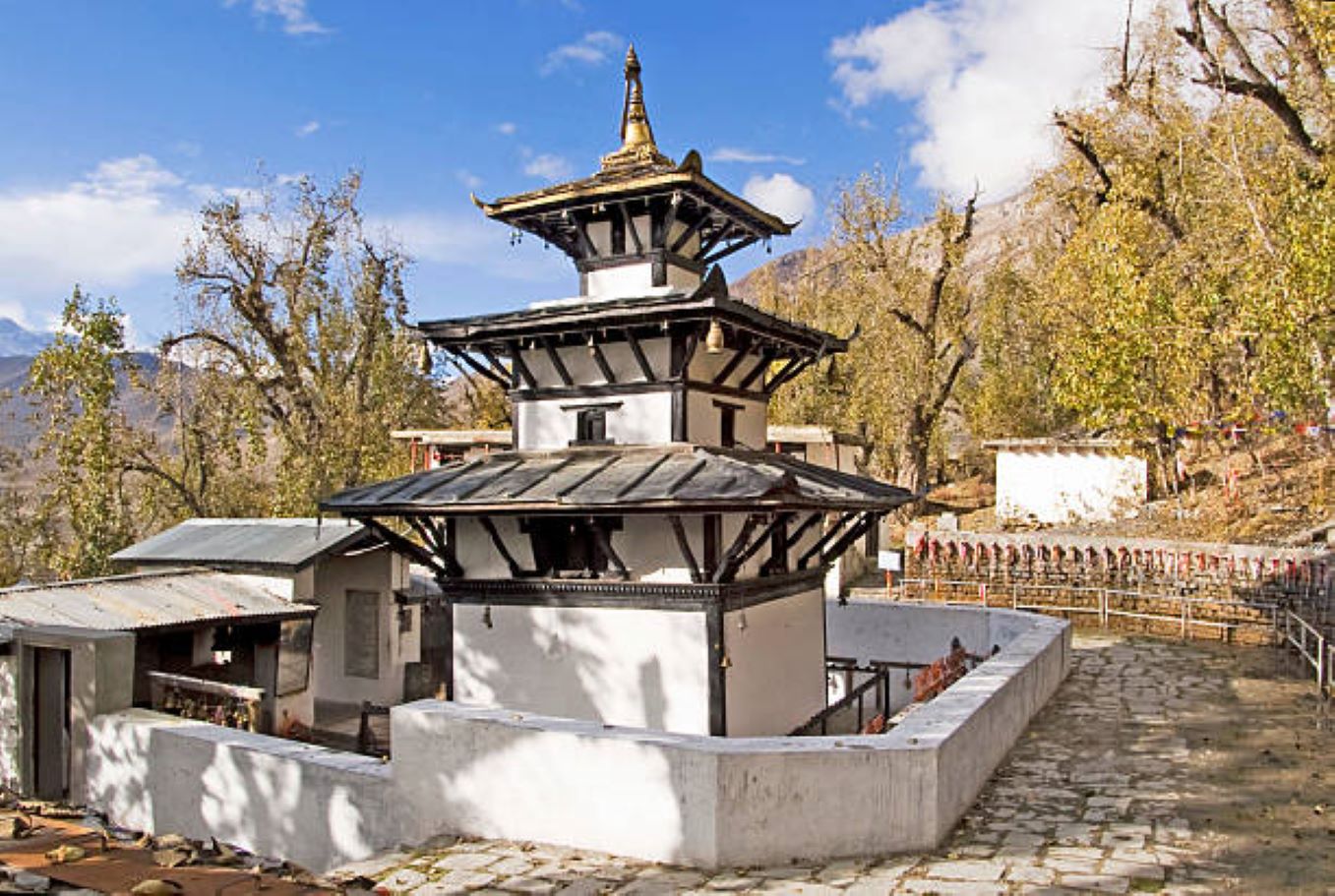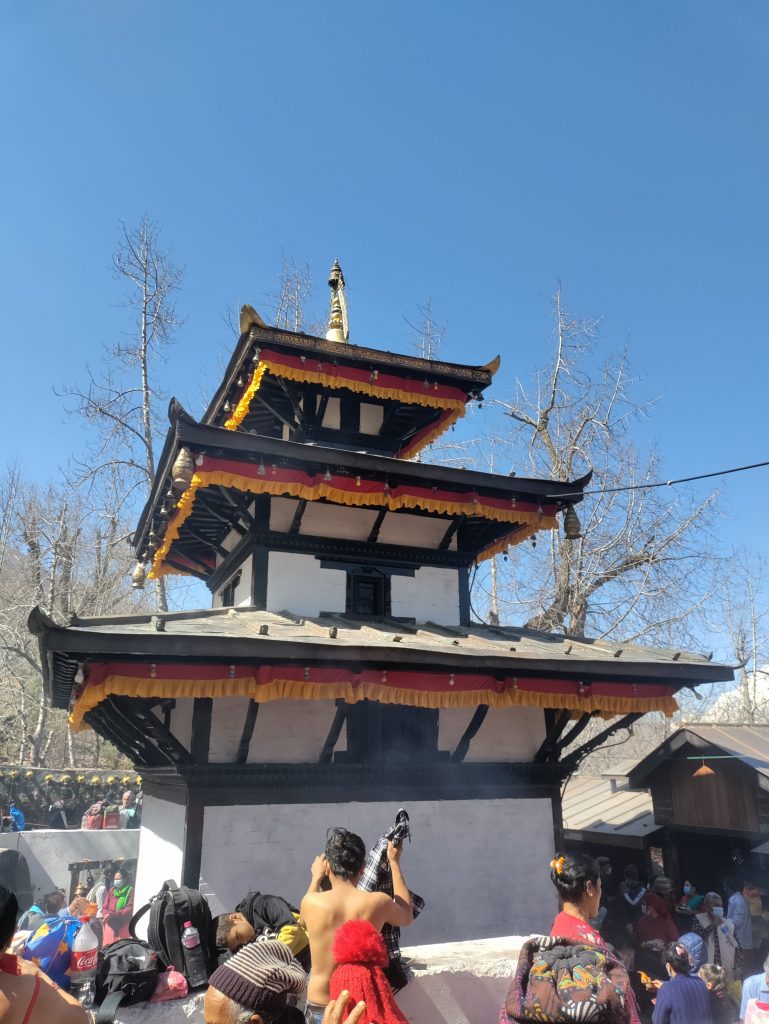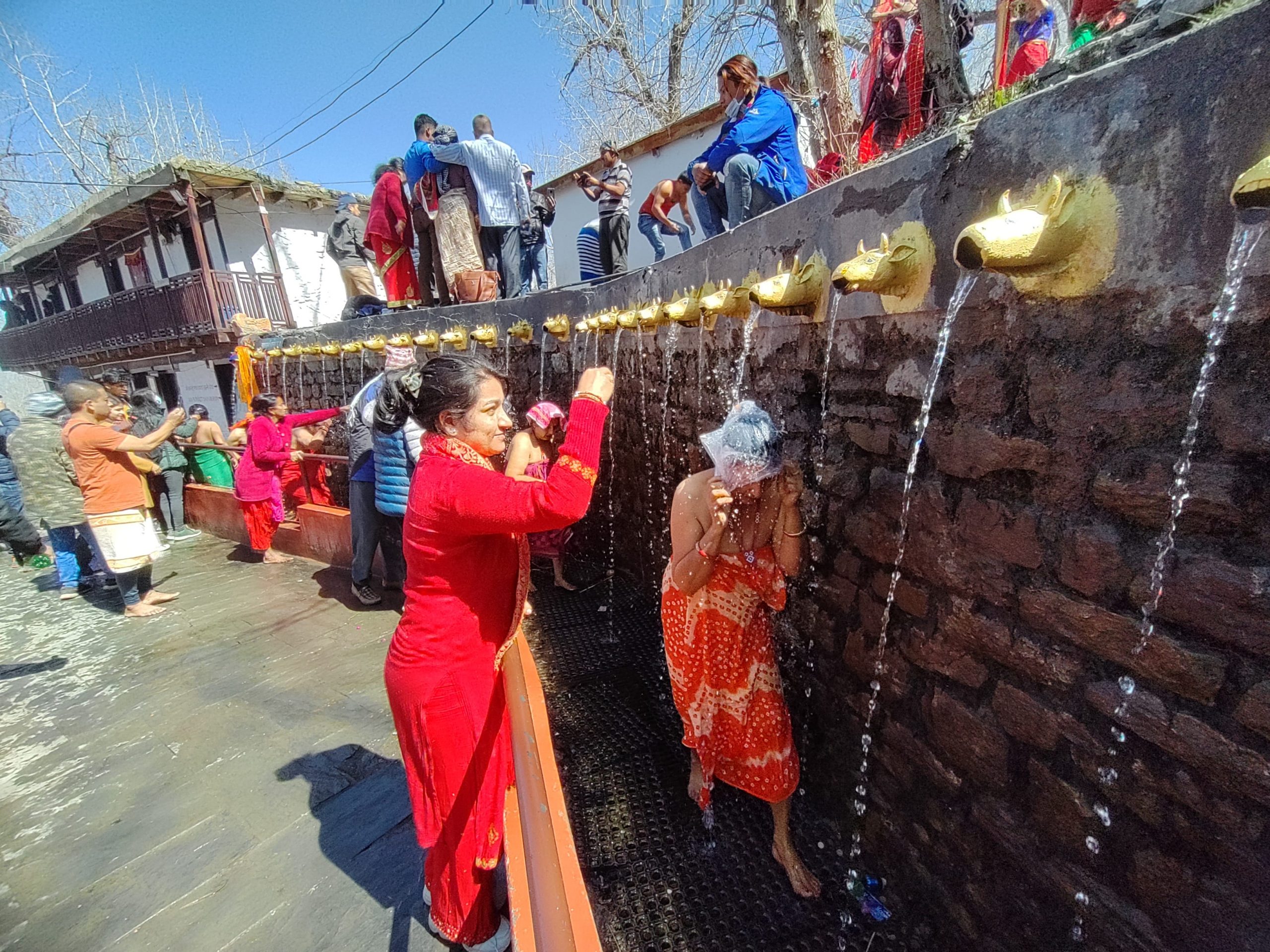Muktinath Temple is a sacred pilgrimage site located in the Mustang district of Nepal, at an altitude of 3,800 meters above sea level. The temple is dedicated to Lord Vishnu, one of the principal deities in Hinduism, and is believed to be one of the eight sacred places of Hinduism. It is a revered place of worship for both Hindus and Buddhists, and thousands of devotees from around the world visit the temple every year to seek blessings and attain salvation. Hindus call this shrine Muktikshetra meaning place of salvation and Buddhist call this place Chumig Gyatsa meaning place of 108 waterspouts. Muktinath temple is a famous holy shrine of both Hindus & Buddhists of the world. The temple is dedicated to Lord Vishnu, who is worshipped by both Hindus and Buddhists as the god of salvation.
The word “Muktinath” means “the place of liberation” in Sanskrit. It is believed that visiting this temple and taking a dip in the holy waters of the temple’s 108 taps (water spouts) can wash away one’s sins and bring them closer to salvation. The temple complex includes a Vishnu temple and a Buddhist monastery. The Vishnu temple has a golden statue of Lord Vishnu, along with statues of other deities like Laxmi, Saraswati, Garuda, and Hanuman. The Buddhist monastery, located nearby, has a statue of Guru Rinpoche, the founder of Tibetan Buddhism.
The temple is located on the famous Annapurna Circuit trekking route and attracts thousands of tourists and pilgrims every year. It is especially popular among Indian and Nepalese tourists, who visit the temple during the festival of Janai Purnima. This festival usually falls in August and is celebrated by Hindu men who change their sacred thread, known as Janai. Muktinath Temple is a symbol of the deep cultural and religious heritage of Nepal. It is a site of great spiritual significance and is revered by people of different faiths. Its stunning natural beauty and peaceful atmosphere make it a must-visit destination for anyone traveling to Nepal.

Table of Contents
Highlights of Muktinath Temple Tour
- Both Hindus and Buddhists consider it a scared place.
- Located at an altitude of 3,710m, it holds the distinction of being the highest temple in the world.
- The temple has 108 brass water spouts, and it is believed that bathing under each of these spouts can purify the devotees’ body and soul.
- In the temple, two natural gas flames are believed to have been burning continuously for centuries.
- The temple is surrounded by beautiful mountain scenery and provides breathtaking views of the Himalayas.
Best Season to Visit in Muktinath Temple
Muktinath Temple tour is best in the spring (March to May) and autumn (September to November). These seasons provide pleasant weather, clear skies, and dry conditions, making them ideal for trekking and temple visits. The weather is generally dry and the temperature is mild during the spring season. The surrounding landscapes are lush and green, with flowers and rhododendrons in bloom, making it a lovely time to visit. During this season, the trekking trails are also less crowded, making for a more peaceful and enjoyable experience.
Autumn is also a great season to visit Muktinath Temple. The weather is calm, and the skies are clear, allowing for breathtaking views of the surrounding mountains. During this season, the trekking trails are also less crowded, making it an ideal time to enjoy the natural beauty of the area. Overall, both spring and autumn are ideal seasons for visiting Muktinath Temple, providing an unforgettable experience for travellers seeking spiritual enlightenment and adventure in the Himalayas.
Climate
Muktinath Temple is located in Nepal’s Mustang district, in the Himalayan region, at an elevation of 3,710 metres. Muktinath Temple’s climate varies according to season, and temperatures can be extreme due to the high altitude. The temperature in Muktinath Temple remains cold all year, with an average temperature ranging from 5°C to 18°C. During the winter months (December to February), the temperature drops below freezing, and heavy snowfall falls in the surrounding areas, making access to the temple difficult.
Altitude Sickness
Yes, due to its high altitude of 3,710 metres, altitude sickness is a common concern for visitors to Muktinath Temple. Lack of oxygen at high altitudes causes altitude sickness, leading to symptoms such as headaches, nausea, dizziness, fatigue, and shortness of breath..
Mountain seen from Muktinath Temple
Visitors to Muktinath Temple can enjoy a panoramic view of the surrounding Himalayan mountain ranges. The Dhaulagiri mountain, which stands at 8,167 metres and is visible from Muktinath Temple, is one of the most prominent mountains visible from the temple. Dhaulagiri mountain is located to the west of Muktinath Temple and is part of the Dhaulagiri Himal range. The snow-capped peak of Dhaulagiri mountain serves as a beautiful backdrop to the temple and provides visitors with a breathtaking view of the Himalayan landscape. The Annapurna range, Nilgiri, and Tukuche Peak are among the other notable mountains visible from Muktinath Temple. One of the main reasons why Muktinath Temple is a popular tourist destination is the view of these majestic mountains from the temple.
Which River flows near Muktianth Temple?
The main river that flows near Muktinath Temple is the Kali Gandaki. The Kali Gandaki River, which originates on the Tibetan Plateau, is one of Nepal’s major rivers. It flows through the Himalayas, carving deep gorges and canyons on its way to the Nepalese plains. The Kali Gandaki River supplies water to the surrounding areas, and the river valley is home to a diverse range of flora and fauna. The river has cultural significance as well, as Hindus and Buddhists regard it as a sacred river. The temple complex overlooks the Kali Gandaki River, and visitors can take a scenic walk along the river’s banks.
Permit to visit Muktinath Temple
Yes, visitors to Muktinath Temple must have a valid ACAP permit to enter the temple and its grounds. The permit is available from the ACAP office in Kathmandu or Pokhara, as well as the entry point in Jomsom. The Annapurna Conservation Area Entry Permit (ACAP) and the Trekker’s Information Management System (TIMS) card are the two types of permits available. All visitors to Annapurna Conservation area must have an ACAP permit and trekkers and hikers must have a TIMS card.
How can we Visit Muktinath Temple from India?
There are several options for getting to Muktinath Temple from India. The quickest and most convenient option is to fly directly from New Delhi to Kathmandu, which takes about 2.5 hours. Visitors can take a domestic flight from Kathmandu to Jomsom, which is the closest airport to Muktinath Temple. The 25-minute flight from Kathmandu to Jomsom provides breathtaking views of the Himalayan mountains.
Visitors can also travel from India to Muktinath Temple via the Sunauli border crossing in Uttar Pradesh. Visitors can take a bus or taxi from Sunauli to Pokhara. which serves as the starting point for the trek to Muktinath Temple. The trek from Pokhara to Muktinath Temple takes about 7-8 days, and along the way, visitors can enjoy the scenic beauty of the Annapurna region.
Do we Need Visa and Passport to visit in Nepal from India?
No. Indian people don’t need a visa and passport to visit Nepal as Nepal shares an open border with India. You need to carry your Aadhar card or Pan card so that you can show if required it at some places.
What are the accommodation options in Muktianth Temple?
Visitors can stay at Jomsom, Kagbeni and Muktinath bazar. There are various kinds of accommodation available. The lodging options range from basic lodges to luxurious hotels, and visitors can select the one that best fits their budget and preferences. There are a few basic guesthouses and lodges within the temple complex that provide basic lodging. These guesthouses offer basic services such as clean rooms, shared bathrooms, and simple meals. There are several hotels and resorts in Jomsom, the closest town to Muktinath Temple, for those who prefer more comfortable accommodations. These hotels provide modern amenities such as comfortable rooms with attached bathrooms, 24-hour electricity, and Wi-Fi access.
What kind of Food is available near Muktinath Temple?
There are several food options near Muktinath Temple that cater to a wide range of tastes and preferences. Local Nepali cuisine, as well as Indian, Tibetan, and continental dishes, are available. There are a few small restaurants and food stalls within the temple complex that serve basic meals such as dal bhat (rice and lentil soup), noodles, and momos (dumplings). For those seeking more variety, Jomsom, the nearest town to Muktinath Temple, has a number of restaurants and cafes. These restaurants serve pizza, pasta, Indian curries, and Tibetan dishes such as thukpa (noodle soup) and momos.

How to reach Muktinath?
You can choose various method to reach Muktinath Temple. Muktinath via Road, via heli, Muktinath via flight, via trekking. You can choose a desired method for Muktinath darshan.


